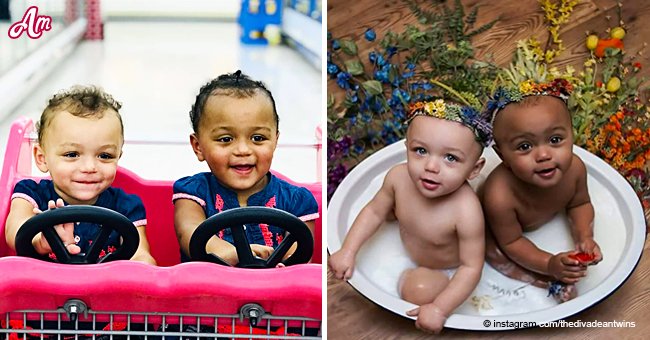
'Nobody believes they are twins': biracial twins became internet sensation for being different
While twins are always fascinating, biracial ones are even more so. Recently a pair of biracial twins became an internet sensation after their Instagram page went public.
They are Jarani and Kalani from Quincy, Illinois. Their parents, Whitney and Tomas, set up an Instagram page for them from which they can get modeling jobs.
Tomas is black, and Whitney is white. The twins each ended up taking after one of their parents. Hence one of them is white, and one is black.
BIRACIAL BABIES
The parents admit that they were both confused at their unique racial situation when the babies were born:
“Kalani was as white as can be. I was just in denial because you know the odds of this? I would never think I would have a black and white twin. That’s why I asked if she was albino because she was just so white.”
Whitney and Tomas are not the only people in disbelief. Most of the people who see the family in public do not believe that Jarani and Kalani are twins, so Whitney purposefully dresses them in matching outfits.
Since the launch of their Instagram page, the girls have become symbols of unity and taking a stand against racism.
ALL GROWN UP
Jarani and Kalani are not the only biracial twins. Lucy and Maria Aylmer are in a similar situation and celebrated their 21st birthday in November last year.
They are fraternal twins, but Lucy is white, and Maria is black. Their parents are white and Jamaican respectively.
The girls faced a lot of bullying, mainly when they were still in school. Since then they have learned to be strong, and it has made their bond closer.
NATIONAL GEOGRAPHIC GIRLS
Perhaps the most well known biracial twins are Marcia and Millie Biggs. They are 11 years old and were on the front cover of “National Geographic” magazine in April 2018.
Marcia is lighter with blue eyes, and Millie is darker with brown eyes. While this may seem like a strange phenomenon, experts say that it occurs in one in every 100 fraternal twins.
In the article about them in “National Geographic,” the focus is on what their case can teach people about how race works and seeks to change attitudes towards biracial people.